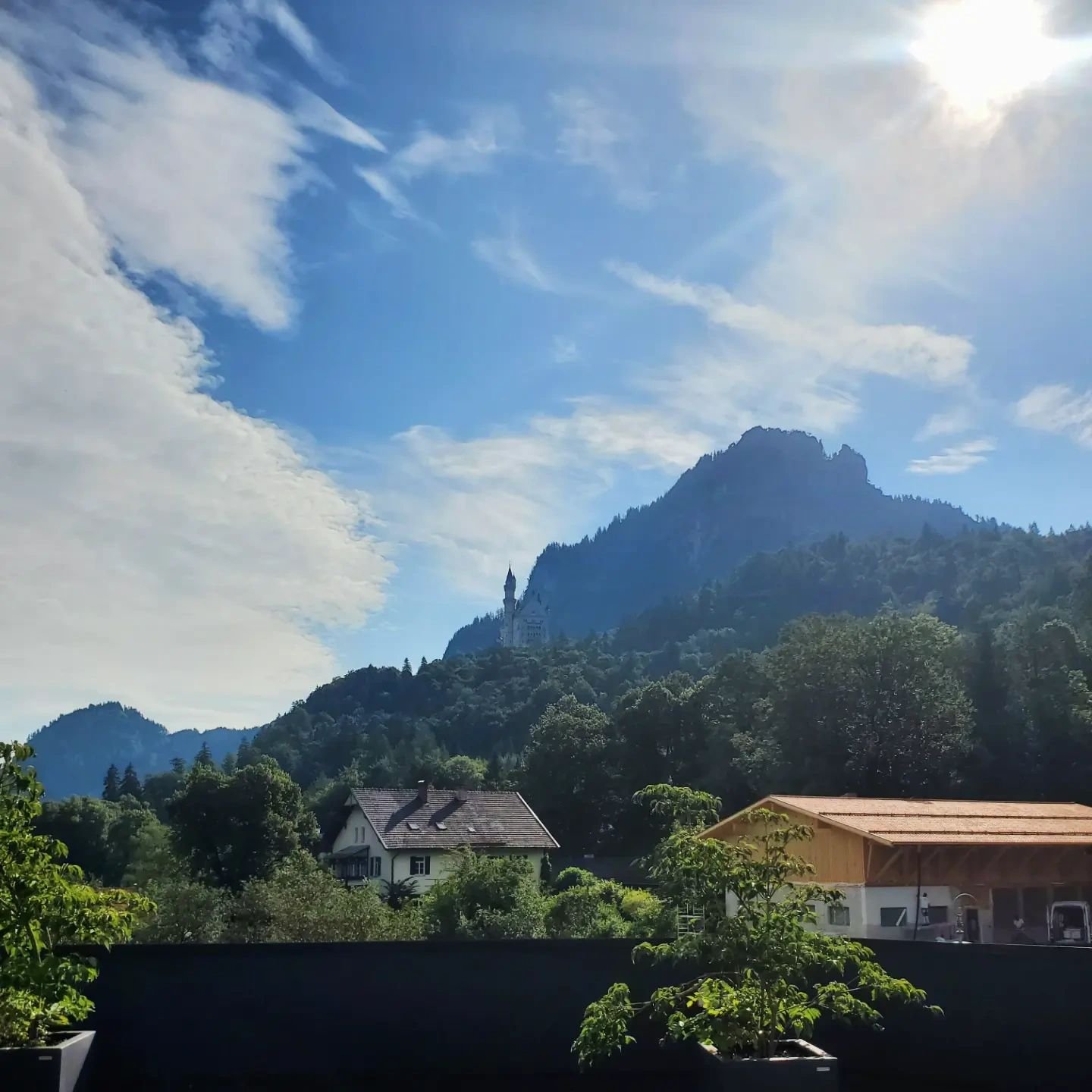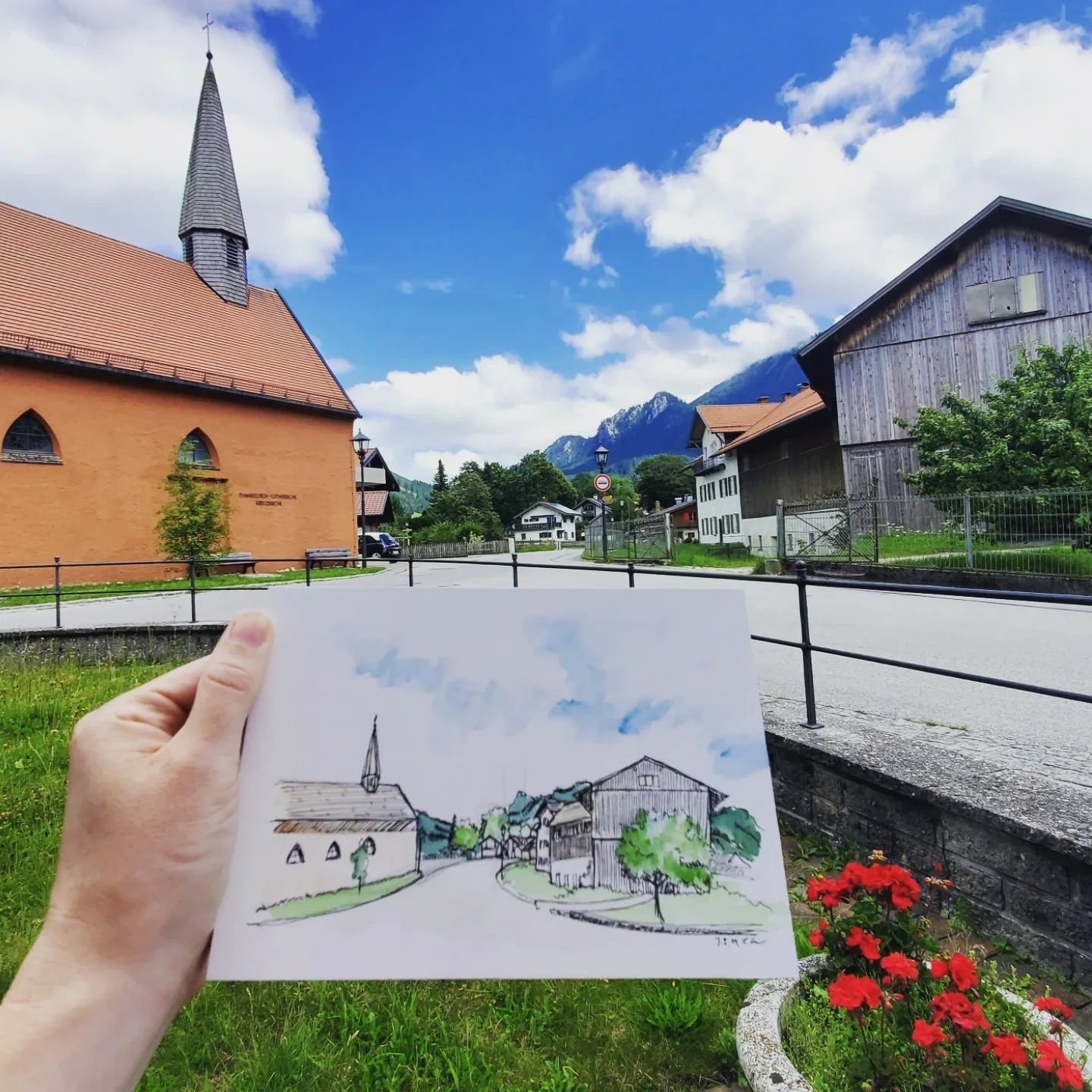Creativity is a powerful force. Is it a skill? Are we innately creative, or is creativity something we develop? How, if possible, can we become more creative? Principals at Studio Outside, Amy Bartell and Lisa Casey, share their unique perspectives on developing creativity outside of a professional setting and how strengthening their artistic minds translates to landscape architecture. Both Amy and Lisa approach creativity and landscape architecture from different and unique angles, as you will see in this blog.
The following responses have been edited for clarity and brevity.
Do you think it is important for landscape architects to have a rough understanding and ability to create using various artistic mediums?
Amy says, “Creativity is innate in all of us, but it takes pursuing art, in whichever form that may be, to build upon that creativity and develop your artistic instincts.” She highlights individuals from different academic backgrounds, such as science or agriculture, may approach landscape architecture differently. However, having a foundation in art—whether through drawing, painting, or other forms—greatly enhances creativity and design thinking.
“Artistic experience, even from childhood, helps develop an innate sense of what is aesthetically pleasing,” Amy says. She shares a story of her child arranging colored pencils in a specific order as a form of creativity. Creativity, she argues, is something you're born with, though it can be nurtured through studying art and design principles like composition, which ties together colors, shapes, and forms into something visually harmonious.
Amy compares a landscape architect with an artistic background versus one with a more functional background. She argues that neither one is better; each one views space from a different perspective, and it is important to work with designers who have backgrounds in each. She caps off this point with, “I think that an artistic background just sparks your creative ability to come up with something unusual and different.” Amy emphasizes that, as landscape architects, practicing creativity can lead to more spontaneous ideas, often emerging unexpectedly during moments of quiet reflection. This creative process, like brainstorming solutions, helps generate ways of solving design challenges.
However, practicing and creating art is easier said than done, especially when creating something original. We are constantly taking in and absorbing the world around us. Each experience influences what we create. Lisa says, “Much meaningful landscape architecture design is about (re)creating places in a new or unexpected way.” She gives an example of how Dan Kiley’s “Fountain Place” is an interpretation of Texas’ riparian ecology with bald cypress; however, it sits upon a structure in a way that had never been done before. It can be hard to build upon influences and experiences strictly in a landscape architecture setting. “Often, I think that landscape architects practice those skills through using other mediums, but there are likely also other ways to do it,” says Lisa.
How has landscape architecture brought forth your own personal creativity?
Amy says, “Landscape architecture, like other forms of art, involves creating spaces that evoke a physical and emotional response.” For example, in gardens, when they aren’t crowded, there’s a sense of relaxation that comes from the design. Factors like light, dappled shadows, and sensory elements create a calming atmosphere, and the design itself feels “right” when it’s functional and comfortable to be in.
Amy believes that the more one practices and experiences design, the more one can articulate why a space or garden feels beautiful. This process involves a deeper understanding of factors like scale, texture, color, and environmental variables such as soil and weather conditions.
Lisa explains that sketching allows her to better examine a space and practice design. On a trip to the Uffizi Piazza in Florence, Lisa paced through the site and made notations. The proportions of the site were surprising and hard to grasp by simply observing. “I likely would not have noticed that if I had simply visited the space without sketching,” Lisa says.
Amy follows up with, “Creativity manifests differently for different people, but fortunately, landscape architecture offers many avenues for individuals to leverage their unique strengths.” For some, the practice of drawing or designing scratches a personal itch and confirms that they are pursuing the right path. Amy contrasts this with a situation where someone with an innate love for drawing and designing ends up with an accounting job—not that there is anything wrong with it—but finding one's true passion in a creative profession is incredibly rewarding.
Sketch drawn by Lisa Casey.
Reference image for sketch by Lisa Casey.
Have you noticed a more suitable flow of creativity when designing during periods when you were also developing skills in another artistic medium?
The daughter of a skilled painter, Amy grew up surrounded by artistic influences, from music and ballet to Saturday painting classes. She believes that the creativity learned from painting or drawing seamlessly translates into landscape architecture. There’s no real separation between the two for her; it's all about being a creative person and cultivating that creativity through various means.
Lisa and Amy both agree that developing artistic skills alongside landscape architecture can be an incredibly valuable experience. Lisa says, “Two-dimensional mediums are a method through which to understand a space, explore geometry, or communicate an idea to a client. Each of these has a different purpose.” These skills are so important. For the past few years, Studio Outside has offered design workshops to everyone in the office. “This past year, we focused on the craft behind drawing design, and principal designers shared how they use pens, colored pencils, line types, and so forth for paper and digital media,” says Lisa. During the most recent workshop, Amy shared how she renders by hand using colored pencils.
Colored pencil drawing done by Amy Bartell.
When you taught art to landscape architecture students what did you hope they would take away from the class?
When teaching art skills to first-year landscape architecture students, Amy focused on helping them understand composition and how to see in three dimensions. She wanted them to grasp the concept of designing spaces that are not yet built, where the challenge is to visualize and communicate something that doesn't exist. This required students to understand perspective, which is vital in landscape architecture, especially when interpreting plans and visualizing spatial arrangements. Amy emphasized that drawing in 3D helps students perceive how lines and elements interact, making them more aware of design possibilities and how to express those ideas effectively.
Sketch drawn by Lisa Casey.
Does creativity mean something different when in the context of landscape architecture?
Amy views landscape architecture as a creative challenge, but one that is distinctly different from art. While landscape architecture can be artful, it also has functional and practical constraints. It's about creating spaces that are usable and meet the needs of the people who will inhabit them. Designers must often solve problems and present ideas to clients who may not have a clear vision of what the final product will look like. She says her joy comes from transforming those abstract ideas into tangible, functional designs.
When trying to sketch a space to understand it, Lisa shares similar beliefs about landscape architecture and art. She says, “The intention is the relationship and immersive experience that I build with observing a space while sketching. The sketch is an artifact of that dynamic, but not the goal.” What Lisa is expressing with this quote is that she views the act of sketching a site as a way of understanding space. Her sketches are very artful but not created for the purpose of art. Lisa ends this explanation with, “I once heard an artist say that she did not need to hold on to her sketches because what she needed to learn had already happened.” She has found that her process has helped her understanding of space and her ability to communicate design ideas to clients. “Earlier this week, I was discussing a riverwalk project and the extended time that I had spent sketching San Antonio’s original gave me a sense of scale and programming to inform the conversation,” says Lisa.
Amy further extends her belief on how landscape architecture differs from other design fields. For instance, while architecture is often completed and finalized immediately, landscape architecture evolves over time. Projects, when first put in the ground, may not look like much, but over time, as plants grow and landscapes mature, the design takes on its true form. She finds this long-term growth process satisfying, knowing that the landscape will continue to change and improve over the years.
Sketch drawn by Lisa Casey.
Do you think more designers should create outside of a professional environment?
According to Amy, “Designers should bring creativity from outside the professional environment into landscape architecture.” Amy finds it valuable when people share their personal passions and interests because they bring unique perspectives to the table. Whether it’s through their hobbies, like camping or drawing, these outside activities can enrich the creative process and help solve design challenges in innovative ways. A creative work environment includes designers from varied backgrounds.
She shares how having team members with diverse interests enhances the office environment and strengthens teamwork. At Studio Outside, one colleague who’s great with watercolor may bring in their artwork to share, creating a space for personal expression within the work environment, and another may show off their hand-knit purses. “Everyone has something to contribute, and understanding these individual strengths can improve collaboration,” says Amy. Creative people are everywhere within the industry. Lisa shares an experience about an architecture firm that works regularly with Studio Outside. She says, “Everyone there crafted something. It was part of their DNA, and that innate curiosity showed up in their architectural practice but also had many other outlets outside of work.” Bringing forth one's creativity into a team-based environment creates a richer atmosphere in which to draw during the workday.
Creativity is more than just artistic expression—it’s a way of thinking, seeing, and problem-solving. It’s the ability to connect seemingly unrelated ideas, challenge conventions, and bring fresh perspectives to familiar challenges. As Amy and Lisa shared, creativity isn’t confined to talent or profession; it’s something that can be nurtured and expanded through practice, curiosity, and exploration. Engaging with artistic mediums sharpens spatial awareness, enhances problem-solving, and enriches design. Creativity also thrives on inspiration from unexpected places, whether through sketching, music, writing, or simply observing the world more intentionally. By embracing diverse creative pursuits, designers craft spaces that are both functional and inspired. For those looking to deepen their understanding of creativity in design, Lisa recommends Drawing from the Right Side of the Brain by Betty Edwards, Freehand Drawing and Discovery by James Richards, The Artist’s Way by Julia Cameron, and The Accidental Creative by Todd Henry.
Creative work is not a selfish act or a bid for attention on the part of the actor. It's a gift to the world and every being in it. Don't cheat us of your contribution. Give us what you've got.
Steven Pressfield, War of Art






